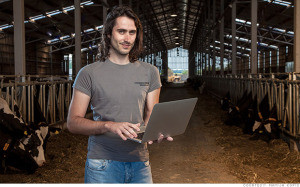On most lettuce farms, workers weave between rows to cull extra heads of lettuce crowding out the healthiest plants. The practice, called thinning, is labor-intensive and a labor shortage has made it difficult to find workers for the task.
In 2011, Jorge Heraud and Lee Redden came up with the idea to use robotics to mechanize lettuce thinning as part of their coursework in Stanford’s executive MBA program.
Their product, the LettuceBot, is a “smart” farm implement that attaches to a tractor. Using cameras and algorithms, the machine measures plant size and assesses color, making split-second decisions about which lettuce plants to keep.
I – Word Understanding
cull – to choose something/someone from a group
labor-intensive – requiring a lot of work (and workers)
algorithms – a procedure for solving mathematical problems or to complete a computer
process
II – Have Your Say
Population is expected to reach 9 billion by 2050. How will we provide safe and nutritious food to these people? Through changes and advances in the agricultural systems. let’s take a look at the the following:
1. Changes in equipment – from horse (or other animal) to tractors, electric motors and even robots.
2. Farm animals – scientist have discovered the type of housing for animals to live and produce more food
3. Biotechnology and genetic engineering – crops are now able to withstand harsh conditions
4. Environmental standards – guide farmers on how to utilize resources for a more sustainable world



